Teach Genetics and Heredity with Free STEM Lessons & Activities
Use these free STEM lessons and science activities to explore DNA, heredity, and genetics with K-12 students.
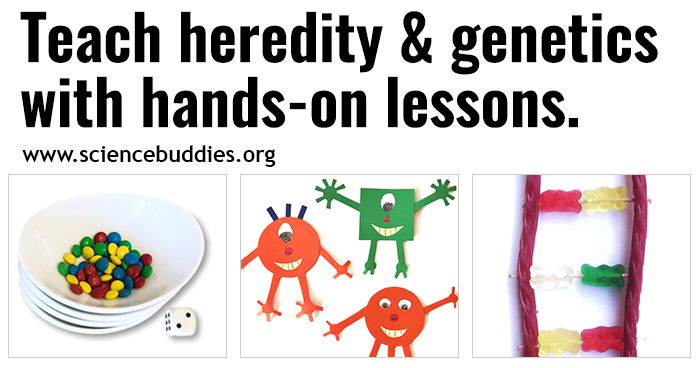
How are we like our parents? What makes apples and onions different? Why are some siblings similar in appearance or behavior and others different? How do our genes determine our features and physical characteristics? Can our genes also predict our health or the probability that we will get a disease?
DNA holds the key to answering these questions.
The free STEM lessons and activities below help students learn about the double helix structure of DNA, the chemical base pairs that make up DNA molecules, how traits are inherited, what it means for traits to be recessive or dominant, what alleles, genotypes, and phenotypes are, what mutations are and whether or not mutations are dangerous, and more. Exploring heredity, genetics, the structure of DNA, and how to isolate DNA segments to study mutations helps prepare students for further inquiry related to using molecular scissors, the science of changing or editing DNA, and genetic engineering.
Educators: Additional information to help you talk about DNA, chromosomes, genes, heredity, and genetics with students appears at the bottom of this resource.
The activities below have been grouped in the following thematic categories:
For key terms to review with students, see the list of vocabulary words at the bottom of this resource. A list of genetics and genomics independent science projects has also been included.
Note: Science Buddies Lesson Plans contain materials to support educators leading hands-on STEM learning with students. Lesson Plans offer NGSS alignment, contain background materials to boost teacher confidence, even in areas that may be new to them, and include supplemental resources like worksheets, videos, discussion questions, and assessment materials. Activities are simplified explorations that can be used in the classroom or in informal learning environments.
Lesson Plans and Activities to Teach About Genetics and Heredity
DNA
1. Candy DNA
In the Make A Candy DNA Model activity, students learn about adenine (A), cytosine (C), guanine (G), and thymine (T), the four based chemicals found in DNA segments. A, C, G, and T pair up in specific ways to form "base pairs" of encoded instructions in DNA. With licorice, gummy candies, and toothpicks, students can model a section of DNA with color-coded base pairs. Once the model DNA section is complete, a "twist" will help them better understand the double helix structure of DNA. (Note: for further exploration of DNA base pairs, see the What Makes a DNA Fingerprint Unique? project.)
2. Paper DNA
Similar to the Candy DNA activity (above), the Colorful Double Helix, A Gene-ius Activity activity guides students in making a model DNA segment from paper and tape.
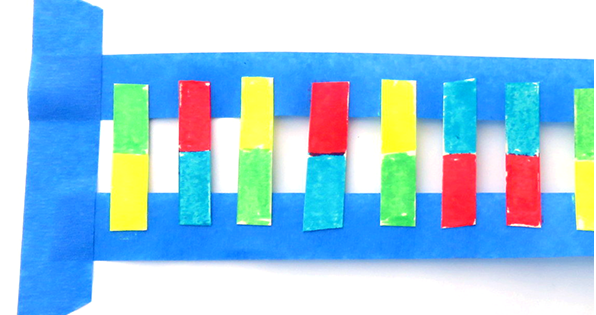
3. Extract DNA at Home
In the Do-It-Yourself DNA activity, students make a simple DNA extraction kit from household materials and experiment with spooling DNA from a strawberry. (Tip! You can try this experiment with other foods, including onions. The Extracting Onion DNA science project contains directions.)
Inherited Traits
4. Alien Genetics
In the Investigate Alien Genetics lesson, students learn about genotypes, phenotypes, and alleles. With a hands-on "alien offspring" activity, students create alien children to demonstrate how dominant and recessive traits determine inheritance. After students have created their alien children, they can explore the concept of pedigree. (Note: An informal activity is also available for this genetics exploration.)
5. Family Traits
In the Seeing Pedigree Science: Making a Family Tree of Traits activity, students investigate their family members to see what phenotypes are common and to make a family pedigree, a chart that tracks which family members have certain traits. The inheritable traits they will look for include a widow's peak in the hairline, curved thumbs, mid-digit finger hair, and detached earlobes. (Note: Students interested in exploring inherited traits for a science fair project can find guidance in the Pedigree Analysis: A Family Tree of Traits genetics project.)

6. Fingerprint Science
In the Succession Science: Are Fingerprint Patterns Inherited? activity, students investigate to see if fingerprints are inherited. After learning about the three types of fingerprint patterns (loop, arch, and whorl), students analyze fingerprints from family members to see what they can discover about fingerprints and genetics. (Note: Students interested in experimenting with fingerprints for a science fair project can find guidance in the Are Fingerprint Patterns Inherited? science project.)
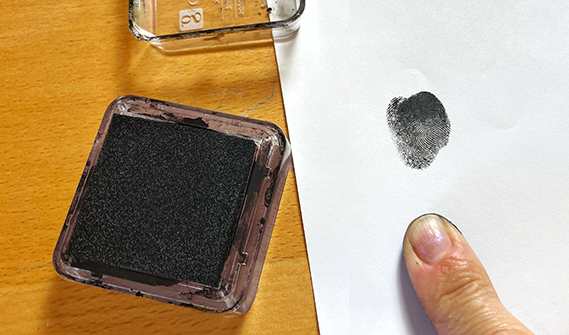
Genetics, Mutations, and Health
7. Taste-Test Science
In the How Gene Mutations Change Your Ability to Taste lesson, students put their taste buds to the test to learn more about genetic mutations. Some students will be able to detect the taste of phenylthiocarbamide (PTC) on a test strip, and some won't. What does this mean? The ability to detect PTC is an inherited trait, but it is also related to a genetic mutation.
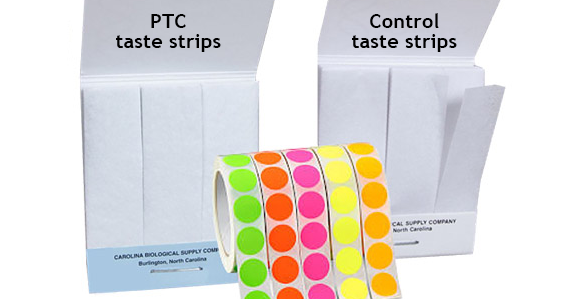
8. Genetic Mutations and Disease
Not all genetic mutations are dangerous. Some, like the mutation that causes someone to detect PTC (see above) are just interesting. But other genetic mutations can lead to diseases. In the From Genes to Genetic Diseases: What Kinds of Mutations Matter? project, students use the NCBI Gene database, an online genetic database, to explore mutations that cause Cystic Fibrosis. Using the online tool, students learn about the CFTR gene and the difference between non-pathogenic and pathogenic alleles as they investigate how some mutations in a gene result in a dysfunctional protein, while other mutations have no effect at all.
9. Modeling the Odds
Some diseases and disorders are genetic rather than caused by environment or lifestyle while others are a combination of events. Genetic factors may make someone more likely to develop, for example, a specific autoimmune disorder. In the Model the Chances of Getting an Autoimmune Disease lesson, students learn about the body's immune system and the science of autoimmune diseases. They then do an activity with dice and candies to model the probability of developing an autoimmune disease like Type 1 diabetes, celiac disease, rheumatoid arthritis, or lupus. (Reminder: Autoimmune diseases are ones in which the body mistakenly attacks itself and produces autoantibodies that destroy normal cells as if they are invasive cells.)
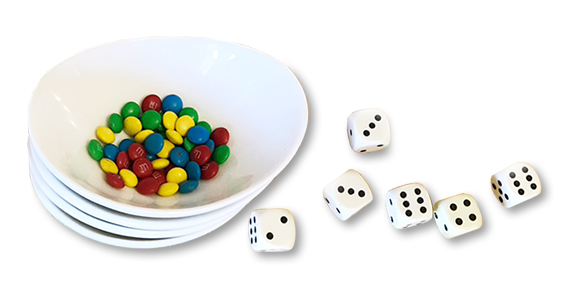
Studying Genetics in Other Plants and Animals
10. Crossbreeding Apples
In the Apple Science: Comparing Apples and Onions lesson, elementary school students observe differences in apples and onions (or other produce) to talk about heritable traits. What makes an apple an apple and different from an onion? A set of traits and characteristics! After considering the many traits of apples, students learn about crossbreeding and grafting and the ways in which apples are produced to yield apples with specific features. In the middle school version, Apple Genetics: A Tasty Phenomena, students also use Punnett squares to determine probabilities for certain characteristics when crossbreeding different types of apples.

11. Mutations and Modifying Strawberry DNA
In the Design 'Y'er Genes lesson, students use strawberries to investigate the relationship between chromosomes, genes, and DNA molecules. In this 3-part lesson, students model a small portion of a strawberry chromosome, model a naturally occurring mutation, and experiment with genetic engineering to alter the DNA of a strawberry.
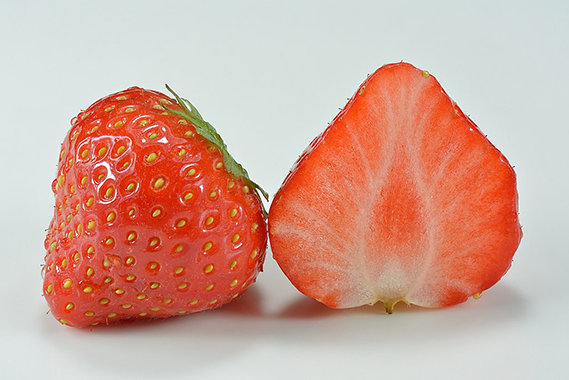 Image: Wikipedia (CC BY-SA 4, Ivar Leidus)
Image: Wikipedia (CC BY-SA 4, Ivar Leidus)
12. Tortoiseshell Cats
Have you ever seen a tortoiseshell cat and wondered what kind of cat it is? Tortoiseshell coloring is actually not related to a specific breed of a cat. Instead, any female cat could end up with tortoiseshell fur. In the X-inactivation Marks the Spot for Cat Coat Color project, students learn about autosomal genes and sex-linked genes. There are three primary genes related to fur color in cats. Two of these are autosomal, and one is sex-linked and appears only on the X chromosome. In the project, students investigate how fur color is determined for cats and the process of X-inactivation in female cats. By studying patterns of fur color in tortoiseshell cats, students discover whether X-inactivation is predetermined or random.
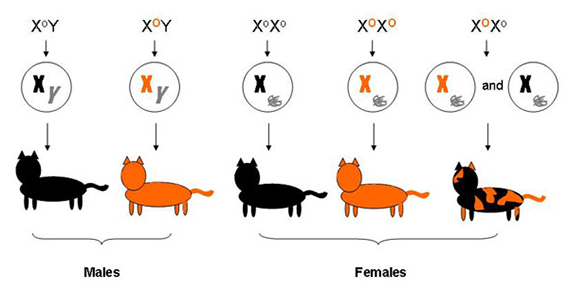
Genetics and Genomics Projects for Students Doing Independent Science Projects or Science Fair
Students interested in projects involving genetics and genomics may enjoy independent science projects like these:
- Model How Environment and Genetics Change the Chances of Getting Cancer
- Do-It-Yourself DNA
- What Makes a DNA Fingerprint Unique?
- Pedigree Analysis: A Family Tree of Traits
- Extracting Onion DNA
- How Much DNA Can You Pack into a Cell?
- Are Fingerprint Patterns Inherited?
- From Genes to Genetic Diseases: What Kinds of Mutations Matter?
- Forensic Science: Building Your Own Tool for Identifying DNA
- What is the Woolly Mammoth's Closest Living Relative?
- Drugs & Genetics: Why Do Some People Respond to Drugs Differently than Others?
- Hitting the Target: The Importance of Making Sure a Drug's Aim Is True
- BLAST into the Past to Identify T. Rex's Closest Living Relative
- BLASTing Flu Viruses
- Neanderthals, Orangutans, Lemurs, & You—It's a Primate Family Reunion!
Teaching About Heredity and Genetics in K-12
Teaching about heredity and genetics may be a topic in your K-12 classroom as students learn about DNA, genetic sequences, inherited traits, and genomes. Learning about genetics sets the stage for more advanced learning about genetic engineering.
DNA molecules contain the coded instructions for how an organism develops and functions. These instructions are stored in chromosomes, which are then replicated throughout the cells of the body. Almost all cells in an organism contain a copy of the organism's DNA. An organism's DNA is specific to the genome of the species but also unique in many ways to the individual. Offspring will have DNA that contains specific features from the DNA of both parents. The traits an offspring presents depend upon the recessive and dominant genes from the parent DNA. Heredity is the study of inherited traits, characteristics that are passed down by biological parents, like having brown eyes or red hair. Genetics is the study of heredity and individual genes or systems of genes that give rise to a phenotype. Genomics is the study of all of an organism's DNA, including the regions of DNA which do not code for genes.
For additional related resources to teach about and explore concepts related to genetics and genetic engineering, see Teaching Biotechnology at All Grade Levels.
Vocabulary
The following word bank contains words that may be covered when teaching about heredity and genetics using the lessons and activities in this resource.
- Allele
- Autoantibodies
- Autoimmune
- Autosomes
- Chromosomes
- Crossbreeding
- Deoxyribonucleic acid (DNA)
- Dominant gene
- Gene
- Genetics
- Genetic engineering
- Genetic mutation
- Genotype
- Grafting
- Gregor Mendel
- Heredity
- Heterozygous
- Homozygous
- Inherited trait
- Pedigree
- Phenotype
- Probability
- Punnett square
- Recessive gene
- Sex chromosome
- Trait
- X-chromosome inactivation (X-inactivation)
Projects for Student Exploration
Students interested in genetics, heredity, and genetic engineering can find related projects in project topic areas at Science Buddies like:
Thematic Collections
Collections like this help educators find themed activities in a specific subject area or discover activities and lessons that meet a curriculum need. We hope these collections make it convenient for teachers to browse related lessons and activities. For other collections, see the Teaching Science Units and Thematic Collections lists. We encourage you to browse the complete STEM Activities for Kids and Lesson Plans areas, too. Filters are available to help you narrow your search.
Categories:
You Might Also Enjoy These Related Posts:
- Teach Genetics and Heredity with Free STEM Lessons & Activities - Genetics Science Projects
- 25+ Robotics Projects, Lessons, and Activities
- 15 Density Science Experiments
- Teach Chemical Reactions - 20+ Chemistry Lessons and Activities
- Forces and Laws of Motion Lessons
- Mars Rover Landing: Space Science & Mars STEM Lessons and Activities
- 26 Science Projects and Experiments To Teach About Types of Energy
- 13 Lessons to Teach About the Chemistry of Mixtures and Solutions











